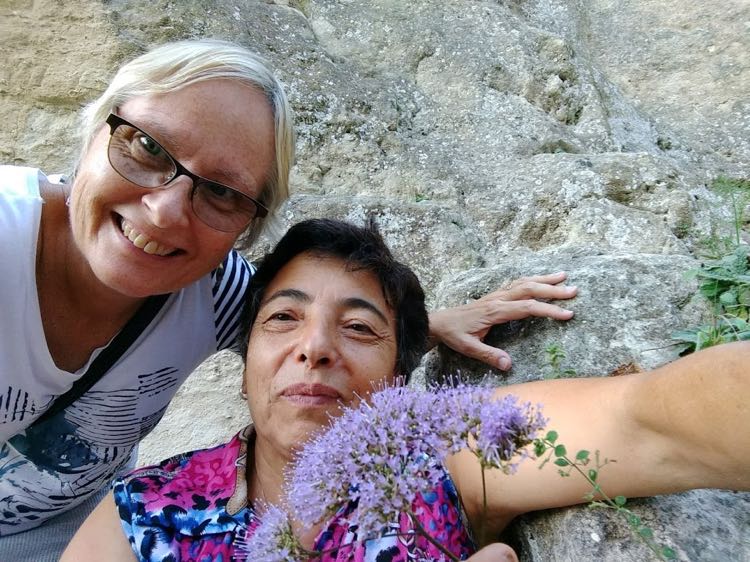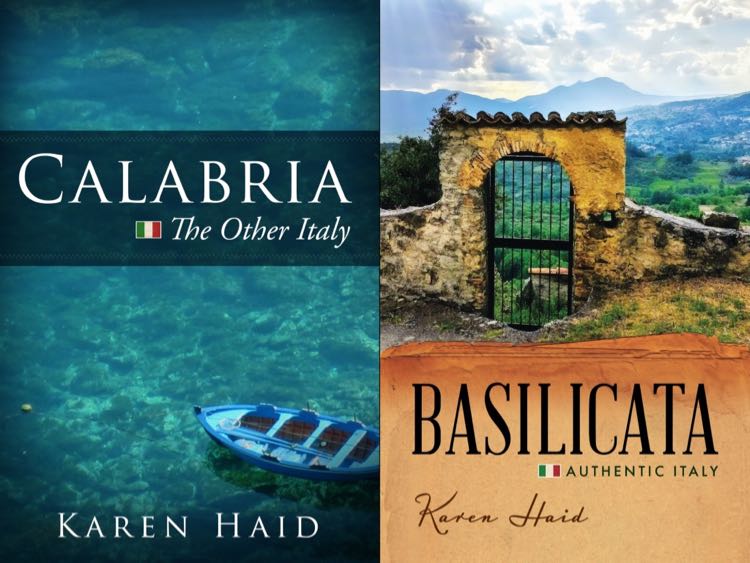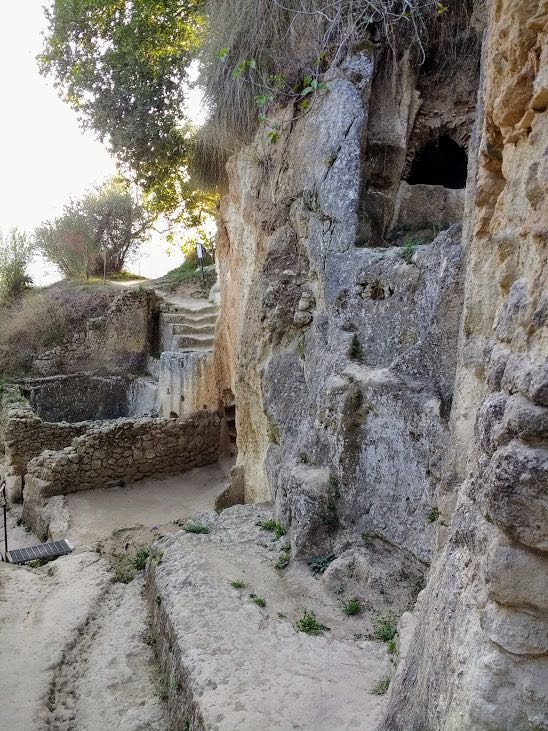Last but not least, the village of Zungri occupies the final place in an alphabetic listing of Italian communities. The fascinating Grotte degli Sbariati di Zungri or Sbariati Grottos of Zungri lie just outside the historic center, seemingly so far yet just 16 kilometers from the bustle of Calabria’s famous Tropea. Here, carved out of the natural stone, the ancient settlement of cave houses exudes a graceful tranquility in balance with the surrounding natural environment.
ZUNGRI
The town’s name comes from the Greek, meaning hill or rock, apropos for its location on Monte Poro in the Province of Vibo Valentia. This mountain of modest height at 710 meters (2,239 feet) boasts mild temperatures and a varied vegetation. Zungri is an agricultural center with approximately 2,000 inhabitants. Surrounding communities include Spilinga, which is noted for production of the spicy, spreadable ‘nduja salami.
The earliest documentation with regard to Zungri as an official settlement dates from the early 14th century; however, the site is believed to have been inhabited from prehistoric times. Today, a pleasant drive along country roads with careful attention to a hopefully accurate navigational system will bring you to Zungri’s grottos.
- Visiting Zungri grottos
- Amidst the Zungri caves
- Zungri complex
- Welcome!
CAVE HOUSES IN CALABRIA
When thinking of Southern Italian cave dwellings, the well-known Sassi of Matera in nearby Basilicata will surely come to mind. Calabria also has remains of insediamenti rupestri or rupestrian settlements, most often in connection with Basilian monks who took refuge in natural grottos during the Middle Ages. These followers of Saint Basil the Great of the Eastern Orthodox Church used the caves as hermitages, as part of monastic communities and in connection with agricultural endeavors.
The grottos of Zungri, nicknamed the città di pietra or stone city, are the jewel in the crown of the cave colonies in Calabria. Occupation of the site has traditionally been dated between the 12th and 14th centuries, although scholars differ on the timeline regarding the community’s foundation. More recent studies by cave experts have hypothesized the founding of the village as much earlier, perhaps even in the 9th or 10th century.
THE GROTTOS OF ZUNGRI
The extensive archeological site is made up of about 100 cave houses excavated from the rocky landscape. A long staircase hewn out of the natural stone leads past the one- and two-room houses, with a few two-story dwellings. The domiciles feature windows, arches, air vents for smoke and numerous niches carved into the interior walls. The units are grouped together and connected by a network of narrow streets and steps as well as a system of water channels and cisterns.
Archeologists have also identified areas that were dedicated to agriculture and production, such as shelters for animals, a space for winemaking, and interestingly, grain silos, one of which was later put into use as a kiln to make lime.
Both functional and attractive, the long-abandoned structures with their natural, white walls and stone additions organically blend with their environment. And the view of the surrounding countryside all the way to the Tyrrhenian Sea is magnificent.
A VISIT TO THE GROTTOS OF ZUNGRI
On one of my visits to the grottos of Zungri, I noticed lovely purple wildflowers popping up between cracks in the stones. Franca Crudo, director of the Asfalantea Association that immerses guests in local experiences, told me they were unique to the area. She was clearly a native zungrese, scampering up and down the stones as she must have done from when she was a child. I cautiously held on to the rope handrail.

The Author with Franca Crudo admiring the wildflowers at the Zungri grottos
The Museo della civiltà contadina or Museum of Rural Culture is at the top of the hill at the entrance to the archeological site. Housed in a former olive oil mill, the museum’s many artifacts are organized into sections focusing on the household, field labor, skilled artisans, weaving and wine production.
Zungri is another one of Calabria’s hidden gems, an atmospheric image of a past reality. The architectural details of the hand-carved grottos fuel the imagination and enable the visitor to step back in time when functionality blended with the natural environment. Its creators clearly had an eye for beauty.
Visit the Grottos of Zungri on my Traditions and Food of Calabria Tour. See the full itinerary on my Calabria tour page.
Interested in more of what there is to see and do in Calabria, the fascinating region in the toe of the Italian boot? Check out Calabria: The Other Italy, my non-fiction book about daily life, history, culture, art, food and society in this beautiful southern Italian region. Or explore Calabria’s northern neighbor in my book Basilicata: Authentic Italy. Available in paperback and electronic versions.
Another fascinating grotto in Calabria is that of Papasidero in the Pollino Mountains. Read my blogpost about it: Grotta del Romito: Prehistoric Art and Grave Sites.
“Like” Calabria: The Other Italy’s Facebook page and follow me on Karen’s Instagram and Karen’s Twitter for more beautiful pictures and information.
Sign up below to receive the next blog post directly to your email for free.












Comments 10
Your blogs are always fascinating Karen! This looks like a really interesting little village and, ever since I visited Matera, these grottoes have aroused my curiosity. I must get to Calabria this year. Thank you for sharing.
Author
Thanks, glad you’re enjoying them. I find grotto dwellings fascinating, too – they kindle the imagination.
Next trip to Italy these are definitely on my to see list!!!! My roots are calabrese and I would like to see more availability of tours or local guides!!!!!!! Thank you for opening our eyes to the magic that is in this area!
Author
That’s why group tours to lesser-known places make sense. In Rome, for example, you can show up for the 10:00 English-language museum visit or sign on to an evening walking tour without enrolling in a complete package. Off the beaten path, it isn’t profitable to have guides available for whenever a tourist happens to walk in, not to mention multi-lingual guides, so a tour is the best option for someone interested in exploring the culture.
And here I thought Zungoli was at the end of the Borghi alphabets! This place looks molto cool. I would love to sketch there some day. Ciao, Cristina
Author
Ha, ha, a reasonable assumption! Definitely loaded with character for great sketching.
ALWAYS ……. MORE interesting facts & photos! MOLTO GRAZIE !!!! 😄
Author
Prego, I visited Zungri for the first time many years ago and included it in the Tropea chapter of my book, but I’m always coming across something new and interesting. Glad you liked the post.
Zungri has definitely caught my attention recently and I really need to visit! Places like these absolutely facsinate me.
Author
These cave dwellings are wonderful to explore.